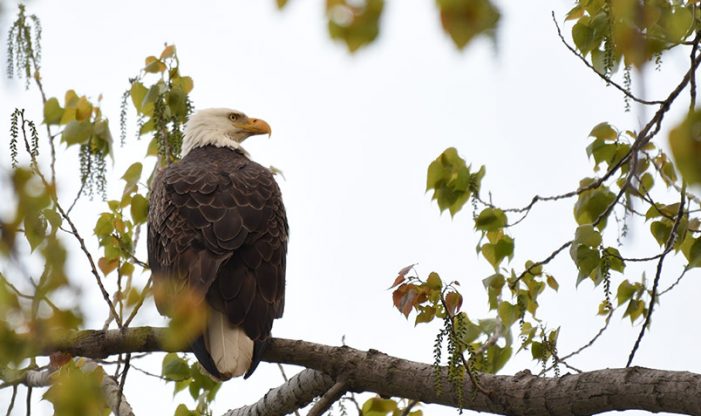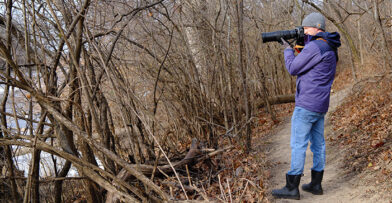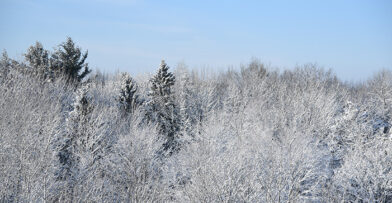The recognition that populations of plants and animals can decline to the point of extinction began early in U.S. history. Though numerous pieces of legislation were drafted to remedy this problem and had impact, they weren’t comprehensive. The current and most effective law is the U.S. Endangered Species Act (ESA), originally passed in 1973. It offered a stronger set of solutions that have proven to save species from extinction.
History of Endangered Species in the U.S.
Since westward expansion, large populations of people moving into new territories have threatened native plants and animals. A stark example involves one of the most common bird species in early U.S. – the Passenger Pigeon, originally numbering in the billions across the country. This bird was hunted to extremes in the 1800s and began to decline precipitously by 1870. In 1914, the last known Passenger Pigeon, named Martha, died in captivity at the Cincinnati Zoo, and the species became extinct. This was an example of what uncontrolled hunting could do and in part inspired the passing of the Migratory Bird Treaty Act of 1918.
The predominant reason species become endangered is habitat loss, most often due to poor land management and overuse. The threat is made apparent by looking at indicator species, who are the first ones to succumb to environmental degradation. The same threat can affect other species within the same surroundings.
Overhunting and pollution are other factors in determining a species’ population status. In addition, sensitive species may require precise living conditions, such as a finely tuned pH level, water tables, and a specific habitat. This problem is compounded by climate change, which is altering habitats and the living conditions for many plants and animals on the planet.
The Modern Environmental Movement and the Endangered Species Act
To highlight these issues, in 1962 Rachel Carson published Silent Spring, which brought environmental concerns into public view. It showed how species were threatened with extinction from pesticide use, including DDT. This book’s critical analysis, based on over a decade of research, inspired the development of the modern environmental movement. The creation of the U.S. Environmental Protection Agency (EPA) soon followed, and the Clean Water Act was passed in 1972, enforced by the EPA.
During this time of environmental activism, the Endangered Species Act of 1973 was enacted. It is regarded as the most successful piece of environmental legislation ever passed. In the first 30 years of the act, fewer than one percent of species on the endangered species list became extinct. There has also been a 90 percent recovery rate in more than 100 species throughout the United States.
How the Endangered Species Act Works
Under the ESA, species may be listed as either endangered or threatened. This is important because it allows the designation of critical habitat for these species and prohibits the destruction of their habitat.
Being considered for the federal endangered list brings about a thorough analysis of the species in question, taking years of research. Equally important, the habitat for the species in consideration is studied too. To get on the federal endangered list, a species must be recommended after a population decline has been noted, often including data collected from citizen scientists.
Public comments are taken for 60 days before a decision about the validity of the claim is made. If the species makes it on the list, environmental impact must be determined for any development in its habitat, and permits are needed to build there. The species is then monitored by universities, industry, and the state. There are consequential actions which go into effect when a species is listed as federally endangered. It’s against the law to intentionally harm an endangered species by importing or exporting, possessing, selling, taking, transporting, or trading it. The laws are enforced by the federal government and individual states.
Success Stories
Because the law is so robust, there are many success stories. In the 1940s, Whooping Cranes had declined to 20 birds. Thanks to ESA protections and the work of conservation biologists, there are now about 600 birds. A program has also been established by the Whooping Crane Eastern Partnership that will help these birds develop a migratory route between their breeding grounds in Wisconsin and wintering grounds in Florida.
In 1967, only 72 Bald Eagle nests were recorded in the entire state of Wisconsin, with only 417 breeding pairs throughout the entire country. The Bald Eagle was prioritized by the ESA, and since then has made a comeback. In 2007, the eagle was taken off the endangered species list. There are currently more than 316,000 Bald Eagles in the lower 48 states, and in 2019 the Department of Natural Resources recorded 1,684 Bald Eagle nests in Wisconsin.
Endangered Species in Wisconsin
In Wisconsin, a law to protect endangered species was established in 1972. Actions to protect endangered species were being considered by the WiDNR. Ruth Hine, the first woman to work professionally in the Wisconsin conservation field, led the development of the state endangered species program at the DNR. She chaired the committee that created Wisconsin’s first endangered species list, and pioneered the keeping of records documenting sightings, which facilitated the monitoring of species populations.
The current state list includes all endangered wildlife in Wisconsin, though the state also enforces species on the federal list. There are currently 10 species of animals in the state, five of which are freshwater mussels, due to pollution and the altering of waterways. There are also 179 species of endangered plants.
Some state-endangered species reside at the Center. To protect them, we often work with the WiDNR and the U.S. Fish and Wildlife Service (USFWS). The elktoe mussel, a species of special concern, and the ellipse mussel, a state threatened species, are both found in the Milwaukee River adjacent to Schlitz Audubon’s Cleaver property. To assist us in keeping track of these threatened species, we work with the DNR on the Wisconsin Mussel Monitoring Project.
Endangered Species at Schlitz Audubon
Much of the work of protecting endangered species at Schlitz Audubon is done through our Conservation Plan and the work of staff along with Volunteer Land Stewards. We are monitoring threatened wildlife, including 34 species of plants, and are preserving habitats that are home to these species.
We are also creating and preserving habitat for 20 birds of greatest conservation need, including the Red-headed Woodpecker, the Field Sparrow, and the Willow Flycatcher. Each of these birds is endangered, threatened, or a species of special concern in Wisconsin. With effective conservation, we will support the possible nesting and reproduction of these 20 priority species, and other birds that share this environment will benefit alongside them.
The Stormwater Wetland and Ravine Restoration Project stabilized our land from erosion, provided revitalized habitat, and is host to two new ponds. Restoration benefited several species—including the federally endangered rusty patched bumble bee, and we are working to monitor this species and its habitat.
Our Southern Hardwood Swamp Restoration is another beneficial project. As a rare habitat type, the southern hardwood swamp is ecologically important, and will be home to many native plants, including two listed as state endangered. The restored understory will also support many pollinator species, and provide food, cover, and breeding habitat for migratory birds, as well as our birds of greatest conservation need. We are currently in phase two of the project.
These are just two examples of projects we are doing that create and protect habitat on our 185 acres. Everything we do on the land is designed to help all species to be healthy. Ongoing restoration will provide an environment in which native, environmentally sensitive species will thrive, including endangered species.
Through a combination of education and raising awareness about the importance of healthy habitats, and the restoration and preservation of these habitats, Schlitz Audubon is highly engaged in protecting endangered species. Join us by participating in our educational programs and supporting our mission to conserve Wisconsin wildlife.
With contributions from: Aubrey Ellickson Fulsaas & Drew Shuster


